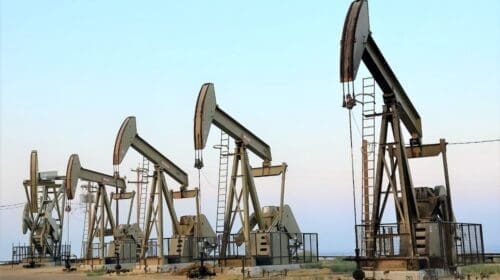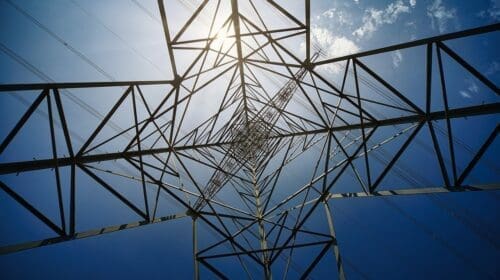While the wrath of 2020 toppled markets, including the energy sector, Westwood forecasts a recovery better than initially expected. Anchored by a firm stake in the oil and gas industry, Westwood Global Energy Group operates as a consulting firm and provides specialty energy market research. The group’s recent analysis supports a strengthening land rig market across the globe resulting from increased commodity pricing and the pressures wagered against the future of energy security.
While 2020 resulted in 39,000 wells drilled on land globally, 49,600 stands to be the speculated completion number for 2022. Westwood additionally reckoned that those numbers would continue to increase to an anticipated 60,000 wells four years from now. A viable explanation finds a foothold in increased day rates dictated by land drilling rig companies. The United States has felt a 25-percent increase in those rates during 2022 alone. The Middle East, however, has managed to avoid the squeeze due to long-term contracts and the reach of big named National Oil Company (NOC) with rigs and support equipment.
With the push to develop reservoirs more significant in complexity, Super-Spec, automated rig supply has grown tight and competitive. As a result, domestic day rates float around $30,000. Outside of the US, the present situation remains the same. Columbia has felt the pain of a competitive supply with higher day rates approaching $45,000.
“It’s encouraging to see the market begin to get back on its feet after the setbacks from 2020 and 2021, but there will still be significant oversupply of rigs globally, which we expect to see throughout the forecast period,” said Todd Jensen, Westwood Research Analyst.
Super-Spec rigs gained traction in response to the uptick in the 2017 drilling activity. The trend of longer laterals introduced in 2013 led the way. As a result, companies responded accordingly. Helmerich and Payne, known in the industry as H&P, reactivated 128 rigs, with 91 receiving Super-Spec upgrades. An additional 38 Super-Spec upgrades were later deployed. Even in 2018, higher day rates paved the way for developing these new rigs with enhanced technology.
John Lindsey, the H&P CEO, acknowledged the added value and demand, saying, “These upgraded rigs provide greater reliability and consistency, and they reduce risk to deliver better wells for customers.”
Although the demand for land rigs appears promising, the oversupply of rigs will still plague the future. The main culprit lingers in the fact that while demand increases, it will likely still fall short of the pre-2014 downturn stats that inspired and drove new rig construction. According to Westwood research, 2022 land rig use has increased to 45 percent, a 2-percent increase from last year. Although numbers are speculated to hit 53 percent in 2026, maximum capacity will likely not be achieved.
Domestic companies already see the writing on the wall and fear supply shortages as quickly as the end of the second quarter in 2023. Adding to the worry, companies supplying automated rigs might see hyperactivity in demand which could quickly outweigh supply. These rigs currently account for 16 percent of the total rig fleet used on land.
The industry’s fear of this topic did not just recently come to light. It was recognized early on by companies like Patterson-UTI. During the first quarter of this calendar year, the company noted that rig inventory was beginning to run low, with prices doing the opposite, resulting in the start of elevated day rates.
Global turmoil also warrants some persuasion. With unrest and worry, many countries like the United States seek to seize the moment and fill gaps. With the sanctions slapped on Russia, the difference in oil supply must be made up elsewhere. These factors contributed to higher pricing and increased land rig demand.
“The need for greater domestic energy production to ensure the security of supply has no doubt had an impact on the speed of recovery that we’re seeing compared to last year’s forecast. The sanctions imposed on Russia following its invasion of Ukraine have led to higher-than-expected oil and gas prices, supporting demand globally,” said Jenson. “This, coupled with Western countries looking to plug the gaps left by Russian supply, has increased the need for greater domestic production and opened the door for other exporting countries to increase output.”
Nick Vaccaro is a freelance writer and photographer. In addition to providing technical writing services, he is an HSE consultant in the oil and gas industry with twelve years of experience. Vaccaro also contributes to SHALE Oil and Gas Business Magazine, American Oil and Gas Investor, Oil and Gas Investor, Energies Magazine and Louisiana Sportsman Magazine. He has a BA in photojournalism from Loyola University and resides in the New Orleans area. Vaccaro can be reached at 985-966-0957 or nav@vaccarogroupllc.com.
Oil and gas operations are commonly found in remote locations far from company headquarters. Now, it's possible to monitor pump operations, collate and analyze seismic data, and track employees around the world from almost anywhere. Whether employees are in the office or in the field, the internet and related applications enable a greater multidirectional flow of information – and control – than ever before.












